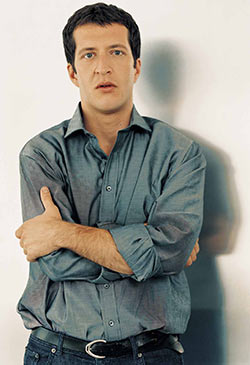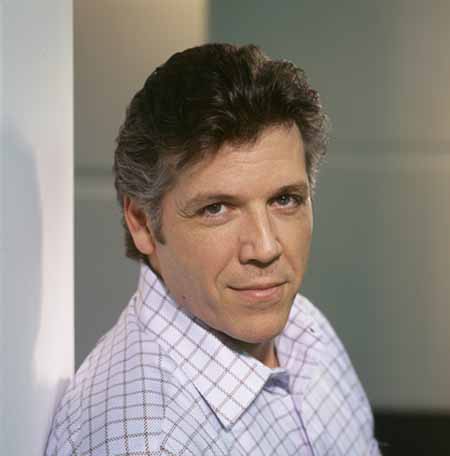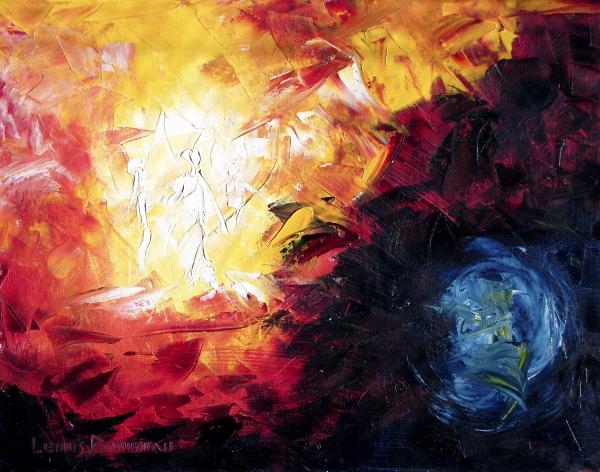Adès’ multimedia premiere mines inventive riches out of chaos
Last season, his first as music director of the New York Philharmonic, Alan Gilbert introduced a new music series held off the Lincoln Center campus. But he also ensures that the subscription audience in Avery Fisher Hall has an ample dose of contemporary scores.

Thomas Adès
On Thursday evening it was the British composer Thomas Adès’s turn to challenge the audience with the New York premiere of In Seven Days (Concerto for Piano with Moving Image). Among other accomplishments, Adès is the composer of two of the more successful operas of recent years, Powder Her Face and The Tempest, the latter having been led by Gilbert at its American premiere by the Santa Fe Opera in 2006. In remarks to the audience prior to the performance of In Seven Days, Gilbert expressed his pleasure at working with an Adès score again.
One could understand his enthusiasm. In Seven Days embodies the composer’s striking ability to communicate by means of such tried-and-true musical ingredients as tonally oriented musical ideas, rich harmonies and vibrant rhythms, while couching them in a language unmistakably of his own day. In Seven Days is a big piece, lasting some 30 minutes, and it tells a big story—nothing less than the creation of the world according to the book of Genesis. Assisting the music in this endeavor are projections by the Israeli video artist Tal Rosner, who is also Adès’s civil partner.
In laconic pre-performance remarks, which also included thumbnail characterizations of each of the seven days, Adès likened the projections to ballet, with the obvious difference that, in lieu of human beings, the moving around is done by on-screen objects of Rosner’s imagination.
In Seven Days is cast in theme-and-variations form, with the variations grouped in two sets of three each and the theme, in its simplest form, positioned at the end as Day Seven. The structure, though, was not readily apparent at first hearing, at least to this listener, in part because the work unfolds without a break.
Day One, with its initial portrayal of “Chaos,” gets the work off to a surprisingly amiable beginning. Rather than some murky, “chaotic” agglomeration of unrelated sounds, Adès starts off with jaunty music for strings, soon to be joined by winds, in triplet rhythm. To the extent chaos is suggested, it is perhaps by deviations from the prevailing rhythmic and tonal underpinning. The entrance of the piano brings enhanced rhythmic complexity and a substantial measure of virtuosity.
Adès, who conducted the 2008 premiere with the London Sinfonietta, here served as piano soloist, with Gilbert conducting, and played brilliantly as the piece went on to behave like a concerto, with solo-orchestra contrasts informed by a wealth of inventive musical ideas and colorful sonorities. Sometimes the music seemed to draw inspiration from the subject matter, as with the piano’s tinklings in the upper register suggestive of stars. But other obvious correlations were relatively few.
As for the visual dimension, it did not unduly detract from the music, which no doubt was the intent. The first image was of grayish oceanic waves, which one might have thought better suited to a later day. Other images were likewise representational—a rain forest, a kaleidoscope (for the sun). Still others were abstract.
Rostner has acknowledged In Seven Days as continuing the tradition of the 1940 Disney film Fantasia. As one colleague remarked afterwards, “Purists used to look down on Fantasia. Now it seems to be the rage.” In any case, the 30 minutes of In Seven Days went by surprisingly quickly, a circumstance attributable mainly to the quality of Adès’s music, but the visual dimension may have been a factor too.

Thomas Hampson
Before intermission Thomas Hampson offered an eloquent account of Mahler’s Kindertotenlieder, part of the baritone’s special attention to Mahler in the dual anniversary years of 2010-11. These songs, settings of five poems by Friedrich Rückert written (as were more than 400 others) as an outlet for the grief occasioned by the death of his two children from scarlet fever, are obviously works of uncommon seriousness and not for overt vocal display.
But Hampson’s voice, while rising to searing climaxes, sounded unusually subdued and even plain, lacking its customary resonance. And he is not the first singer for whom the final song, In diesem Wetter, seemed to lie a bit low, although he caught its drama and Gilbert’s sensitive account of the postlude was consistent with the high level of the orchestral performance overall.
To open the concert, Gilbert led a genteel and fleet performance of Mozart’s Symphony No. 40 in G minor, K. 550.
The program will be repeated 8 p.m. Saturday. nyphil.org.
